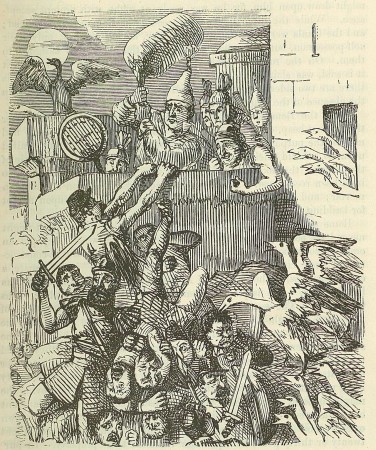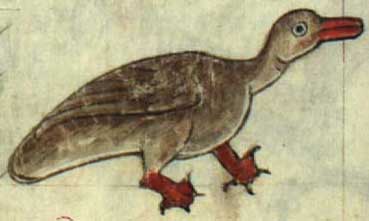Fans of Monty Python movies may remember this scene about a killer bunny from the Holy Grail [warning: it’s meant to be funny, but the over-the-top gore may be somewhat upsetting]. What makes it memorable—and comical, in a black-humor kind of way—is that a cute little bunny is such an unlikely antagonist, and yet turns out to be “the most foul, crude, and bad-tempered rodent you ever laid eyes on!”
In the real world, cute or unlikely-looking animals have been used for other nefarious or unlikely purposes. King Mithradates of Pontus bred flocks of Pontic ducks, which purportedly preferred to dine on baneful plants like hemlock and belladonna with no ill effects to themselves. And yet their eggs, blood, and meat were poisonous to humans. Mithradates incorporated some of their blood into his famous antidote. At least, that’s what Pliny wrote, although he wasn’t exactly a detail guy.*
And then there are the attack geese. According to Pliny (see above), when the Gauls were about to mount a surprise attack on Rome’s Capitoline Hill in the fourth century BC, the sacred geese who lived in the temple of Juno started honking and flapping their wings like crazy and woke the Roman guards in time to repel the attackers.
 As a result, geese were carried on a litter in a solemn procession every year for the next five centuries.** I’m not really clear why any self-respecting goose would agree to be paraded on a litter and not try to fly away. Pliny is unhelpful on this point.
As a result, geese were carried on a litter in a solemn procession every year for the next five centuries.** I’m not really clear why any self-respecting goose would agree to be paraded on a litter and not try to fly away. Pliny is unhelpful on this point.
*Pliny 25.1.1-3 as quoted in Mayor, Poison King p 102 http://www.indiebound.org/book/9780691126838
**Aelian, On Animals 12.33/Pliny Natural History 29.57 as quoted in McKeown Cabinet of Roman Curiosities, 130. http://www.indiebound.org/book/9780195393750


